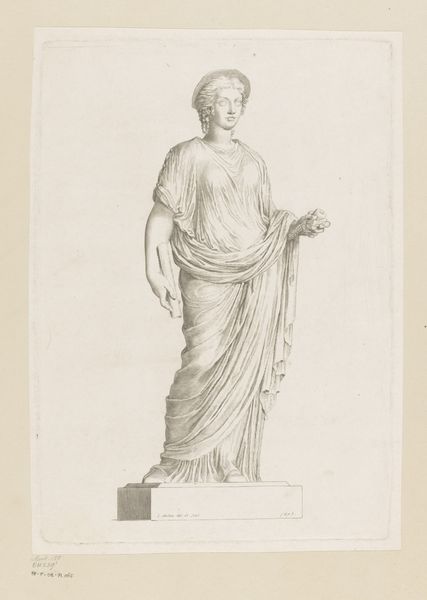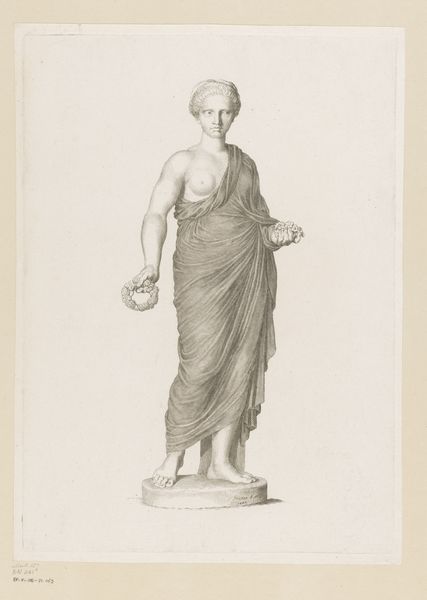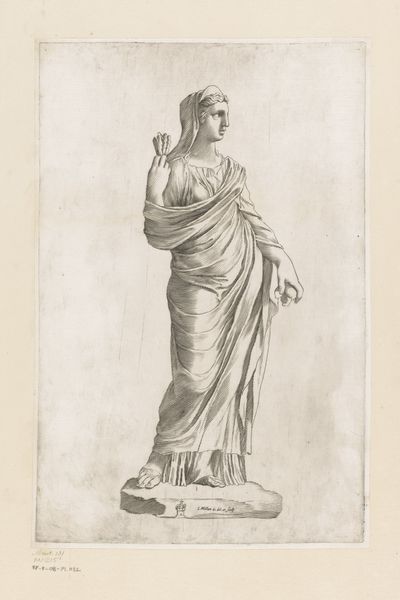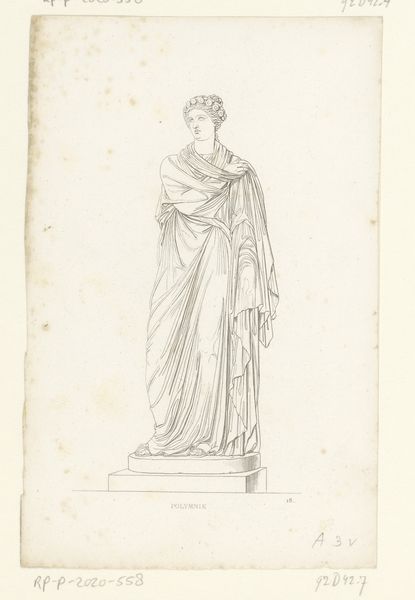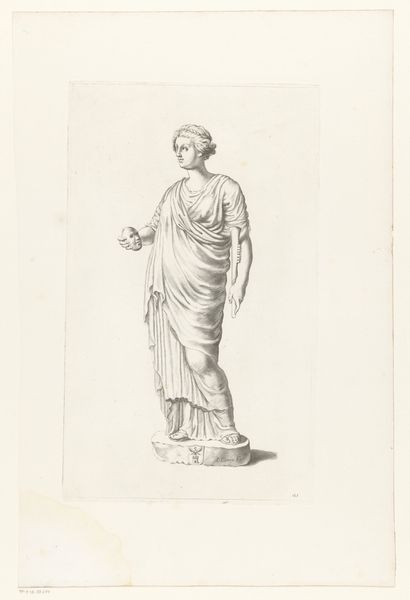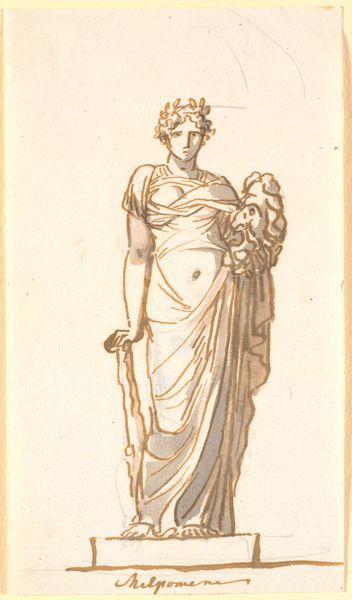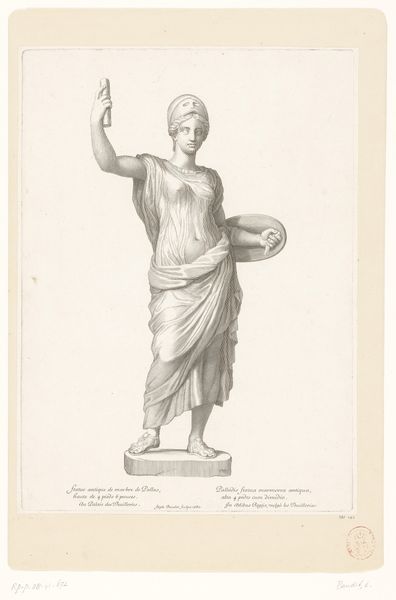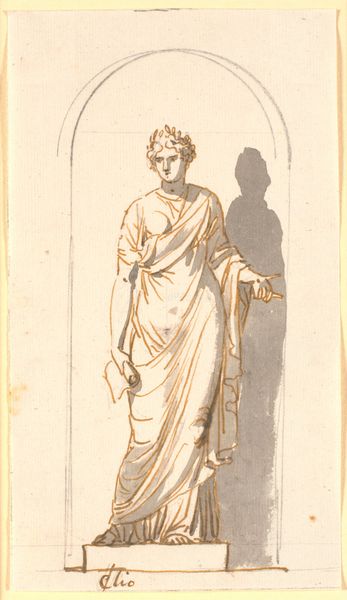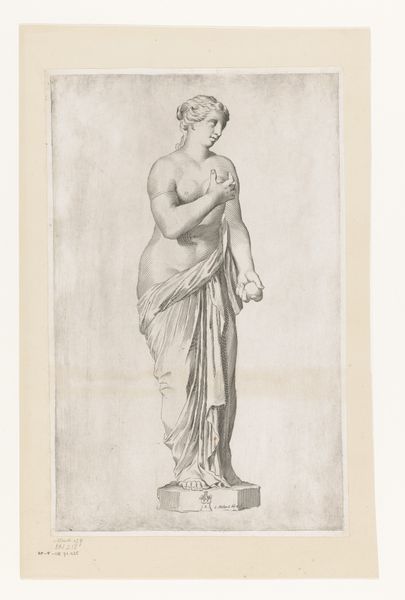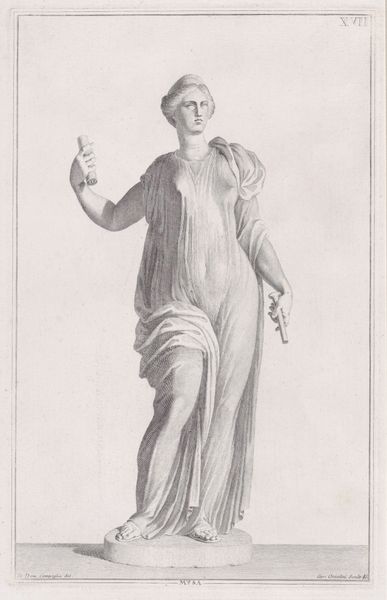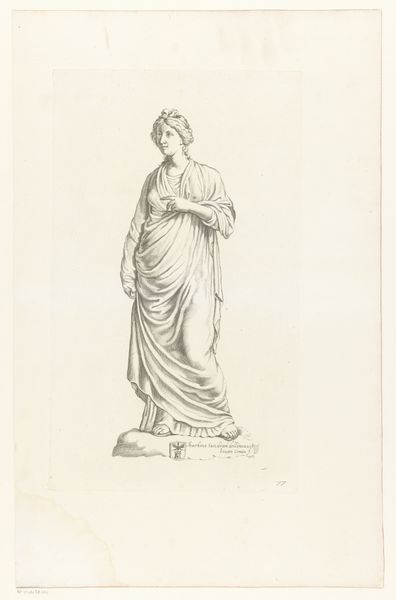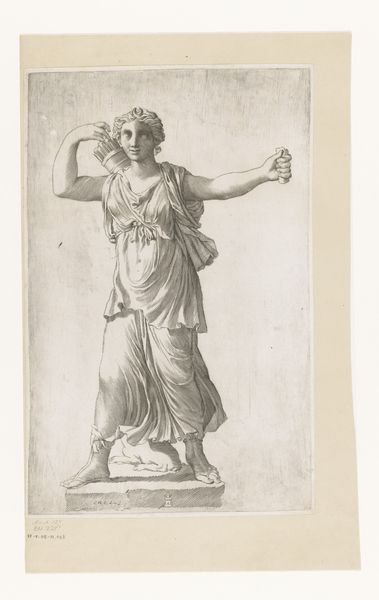
drawing, print, paper, pencil, engraving
#
portrait
#
drawing
# print
#
classical-realism
#
figuration
#
paper
#
pencil
#
history-painting
#
academic-art
#
engraving
Dimensions: height 400 mm, width 284 mm
Copyright: Rijks Museum: Open Domain
Curator: We are standing before an engraving titled "Standbeeld van vrouw," or "Statue of a Woman," created between 1669 and 1677 by Claude Mellan. It is currently held here at the Rijksmuseum. Editor: My first impression is one of classical serenity, almost cool detachment. The linear quality of the engraving really emphasizes the idealized form, doesn't it? There's a monumental feeling achieved with such a light touch. Curator: Indeed. Mellan’s academic skill is remarkable here. Notice the clean, precise lines used to delineate the folds of the drapery, a technique reminiscent of classical realism. His use of hatching creates volume without relying on strong contrasts, achieving a sense of depth. Editor: It is a study of contrapposto that lends itself to historical interpretations, and yet that pointing finger intrigues me. Is it didactic, a gesture implying authority? The flowers in the other hand offer a gentler reading. What iconographic traditions could this refer to? Curator: Considering its context, the engraving speaks to a revival of classical ideals during the 17th century. Figures like this were often meant to embody virtues, representing perhaps an allegorical concept or even a muse. The composition—the balanced asymmetry, the flowing lines—reflects an interest in harmonious form, key to the aesthetics of that period. Editor: Perhaps it points us toward some forgotten piece of history painting. These images carry layered emotional content. That precise index finger also hints at a subtle drama – a gesture that invites engagement beyond simple admiration. Curator: Well observed! In terms of formal qualities, I’m particularly drawn to how Mellan uses light to suggest the cool texture of marble. It's almost palpable through this printed medium. Editor: Ultimately, the drawing compels us to question what classical ideals, even in monochrome print, have to offer. The combination of her gaze, garments, and pointing finger begs viewers to seek meaning beyond visual perfection. Curator: It's been a valuable reflection on how we understand art's classical conventions and the way an engraving of such a seemingly simple piece shows complexity. Editor: Agreed. Looking closer is important. Now that's art that sticks in the memory long after you see it.
Comments
No comments
Be the first to comment and join the conversation on the ultimate creative platform.
